MacBook Pro 2017 review: The future starts with Kaby Lake
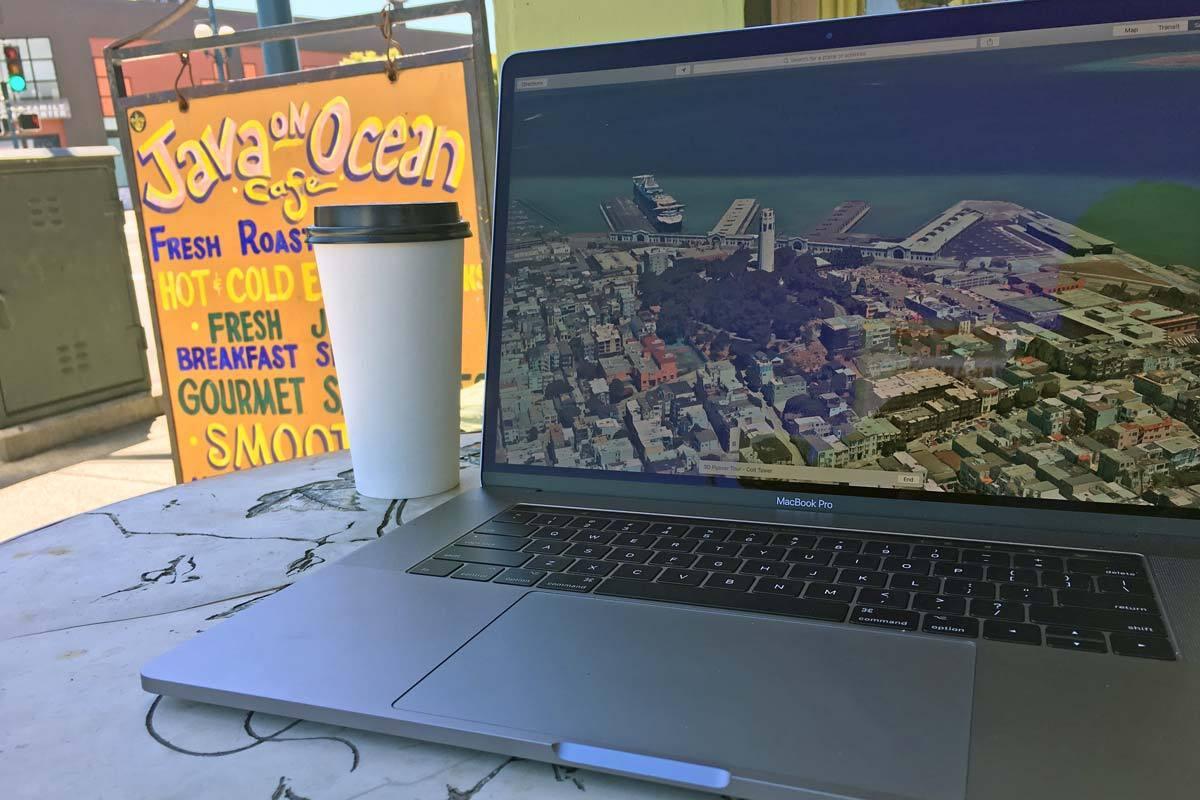
Did you hear cries of regret and maybe a few cuss words in the background during Apple’s Worldwide Developers Conference keynote? If you did, it was from folks who bought a MacBook Pro in the past few weeks. You see, during WWDC, Apple revealed an upgrade to the MacBook Pro to replace the models that were released just last Fall.
Now, on the surface, the new MacBook Pro looks exactly the same, but all of the changes are found under-the-hood via performance bumps. And our test results do show an expected increase in speed, but it’s not enough to induce serious buyer’s remorse in anyone who recently bought a MacBook Pro of the previous generation—though it may spark a bit of envy.
(This review covers Apple’s top-of-the-line model, a 15-inch MacBook Pro with a 2.9GHz processor. This particular model sells for $2,799.)
What’s changed
The heart of the MacBook Pro is where you’ll find the major change. All MacBook Pro models now feature Intel’s Kaby Lake processors, which replace the Skylake processors found in the previous MacBook Pro. For this review, a Kaby Lake 2.9GHz quad-core Core i7 in the model I reviewed replaces a Skylake 2.7GHz quad-core Core i7.
Stock up on adapters: The MacBook Pro relies on Thunderbolt 3 for connectivity. The 15-inch models have four of them. Our MacBook Pro Thunderbolt 3 adapter guide will help you get the ones you need.
Another major change is the graphics technology. The $2,799 model now has the Intel HD Graphics 630 instead of the Intel HD Graphics 530 as integrated graphics. The discrete high-performance graphics chip is now a 4GB Radeon Pro 560, which replaces a 4GB Radeon Pro 460.
What’s the same
Just about everything else about the MacBook Pro is the same as before. The aluminum unibody case design (available in Space Gray or Silver), the 15.4-inch display with a 2880-by-1800 native resolution and P3 color gamut, the Thunderbolt 3 ports (four ports on my review model), and the Force Touch trackpad are unchanged.
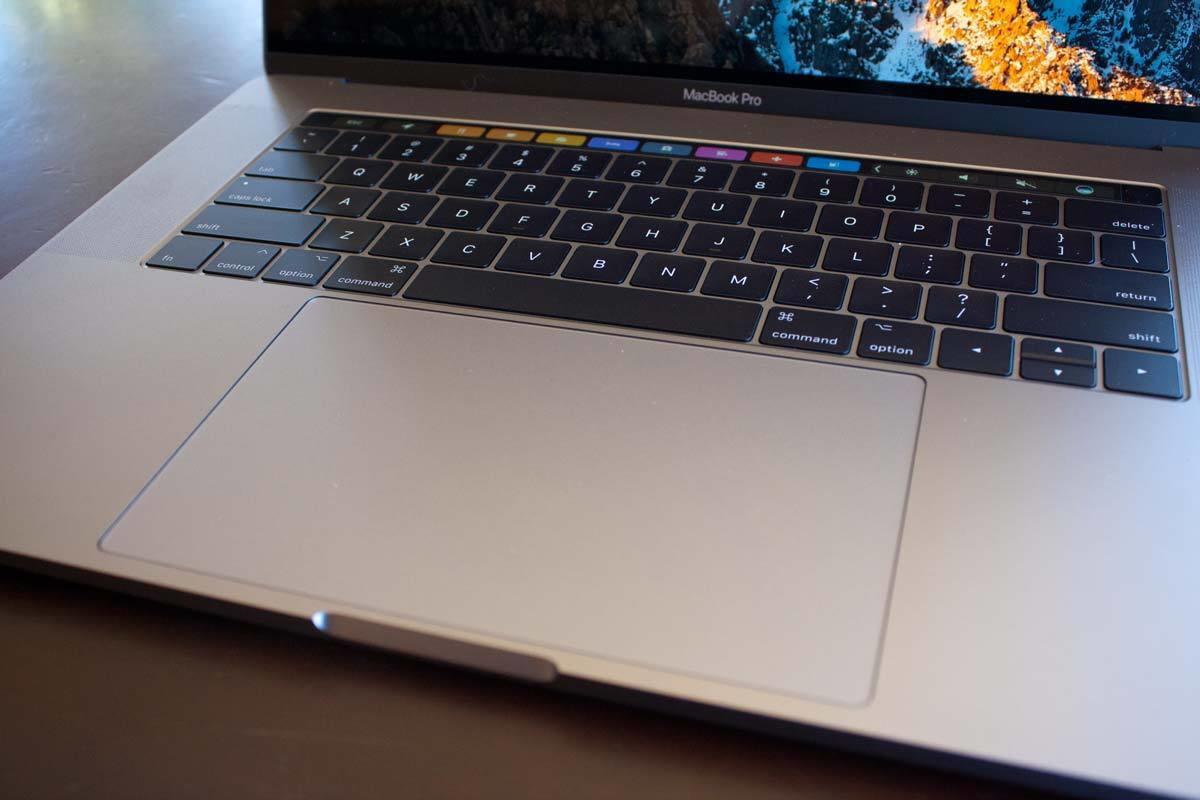 Roman Loyola
Roman LoyolaThe keyboard doesn’t have enough “life” for my taste, but I love the maxi-sized Force Touch trackpad.
Disappointingly, the MacBook Pro still supports a maximum of 16GB of RAM, which is what’s included in the $2,799 model. Apple uses LPDDR3 memory rated at a speed of 2133 MHz, and in order for the MacBook Pro to support 32GB of RAM, Apple would have to use memory that needs more power, thereby affecting battery life. (MacDaddy has a great article explaining the issues with 32GB of RAM on the MacBook Pro.)
The $2,799 MacBook Pro comes with a 512GB solid-state drive. Apple says that the performance of the SSD is 50 percent faster than the previous SSD. The speed increase comes from improvements in the SSD’s hardware controller.
Let’s touch on the Touch Bar
The Touch Bar made its debut on the MacBook Pro last Fall. Since it hasn’t changed, I’m not going to dive into what it is and how it works. (If you aren’t familiar with the Touch Bar, I encourage you to read our review of the 2016 MacBook Pro, specifically, the “Meet the Touch Bar” and “Using the Touch Bar in apps” sections.)
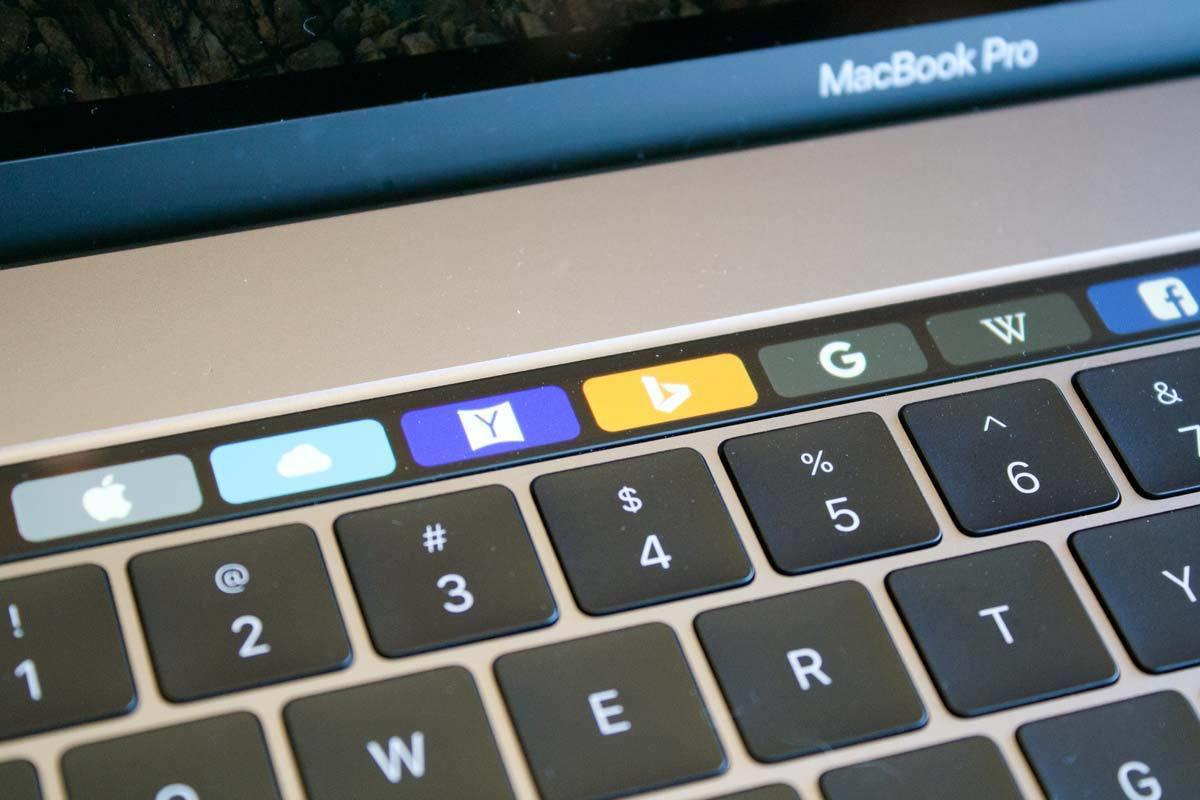 Roman Loyola
Roman LoyolaIntroduced last year, the Touch Bar is here to stay.
My personal experience with the Touch Bar? I don’t use it that much. I like using Touch ID to unlock the laptop, but I’ve gone through work sessions where Touch ID is the only time I use the Touch Bar. When I use a Mac, my focus is on the screen, and I just haven’t gotten used to looking down at the keyboard to use the Touch Bar controls.
But I do know people who love the Touch Bar. I hesitate to say that the Touch Bar is wasted on me; if I forced myself to look at it, I’m sure I’d find it more useful. When it comes to the Touch Bar, as the saying goes, your mileage may vary.
Speed improvements
To gauge the speed of the new 2.9GHz 15-inch MacBook Pro, we ran a set of benchmarks tests. Our result show a significant boost over its predecessor. The 2.9GHz MacBook Pro we tested had a stock configuration: 16GB of 2133MHz LPDDR3 memory, a 512GB SSD, integrated Intel HD Graphics 630, and discrete Radeon Pro 560 with 4GB of GDDR5 memory.
Geekbench 64-bit Single-Core and Multi-Core CPU Test
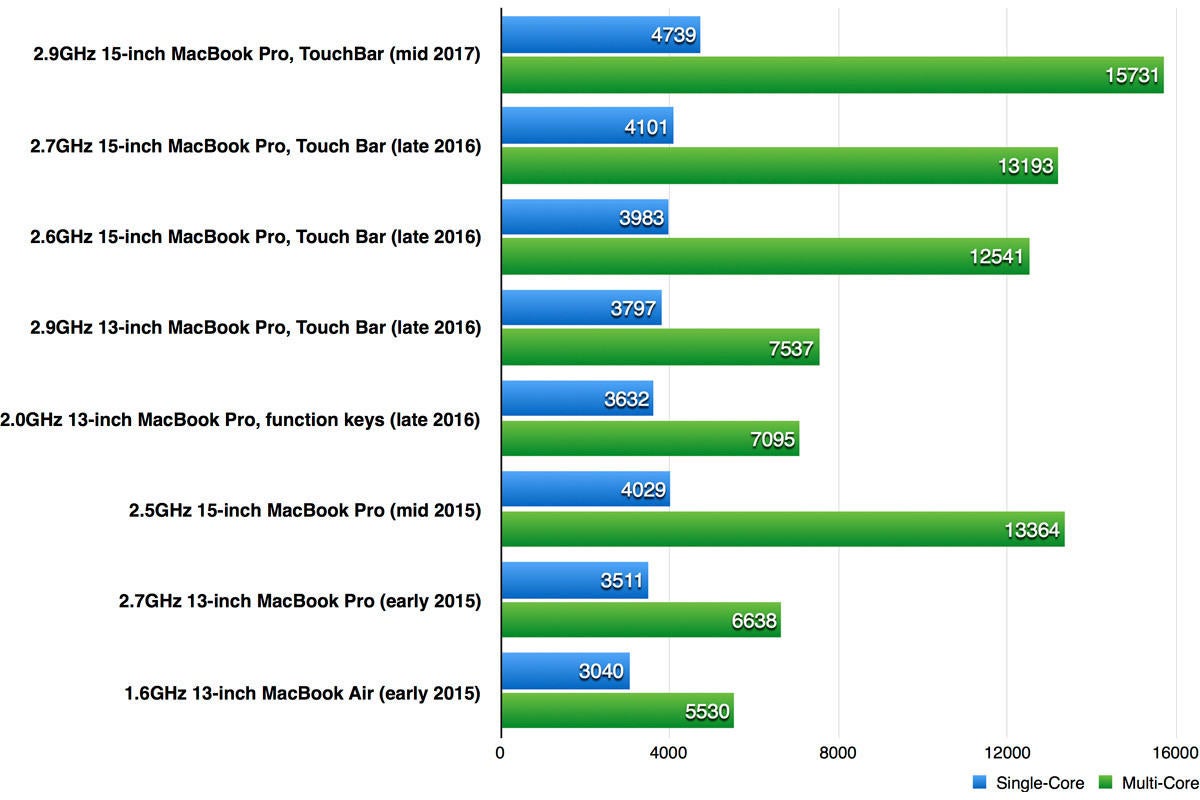 IDG
IDGLonger bars are better. Click to enlarge.
In Geekbench 4.1, the 2.9GHz MacBook Pro posted a score of 4739 in the single-core 64-bit CPU test, which is 16 percent faster than the 4101 score by the 2016 2.7GHz 15-inch MacBook Pro, the model that the new MacBook Pro replaces.
In Geekbench’s multi-core 64-bit CPU test, the 2.9GHz MacBook Pro also saw a speed gain. Its score of 15731 is 19 percent faster than the 13193 score by its predecessor.
Geekbench 4.1 OpenCL Test
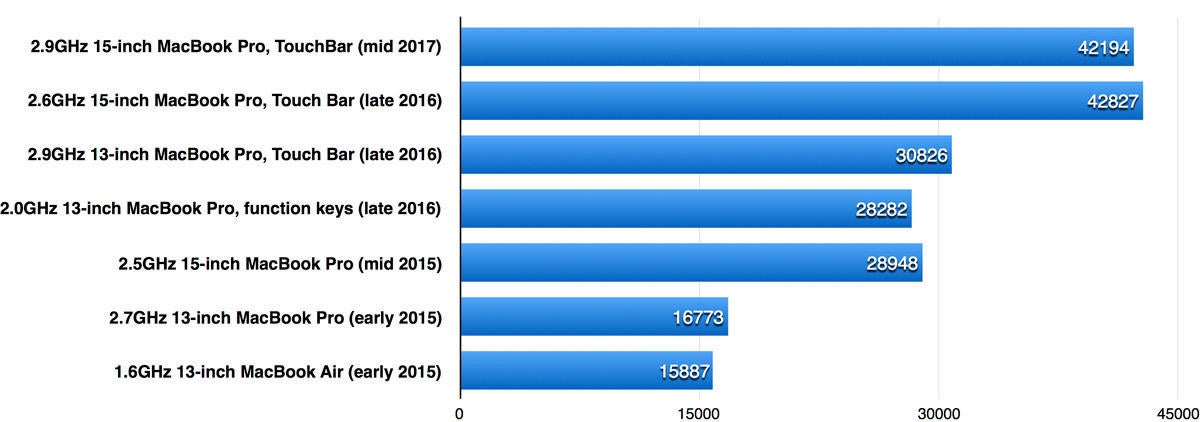 IDG
IDGLonger bars are better. Click to enlarge.
We also ran a pair of graphics benchmarks to test the speed of the discrete graphics card. In the Geekbench 4 OpenCL test, the 4GB Radeon Pro 560 in the new 2.9GHz MacBook Pro posted a score similar to the 2GB Radeon Pro 450 in the 2016 2.6GHz 15-inch MacBook Pro.
Cinebench OpenGL Test
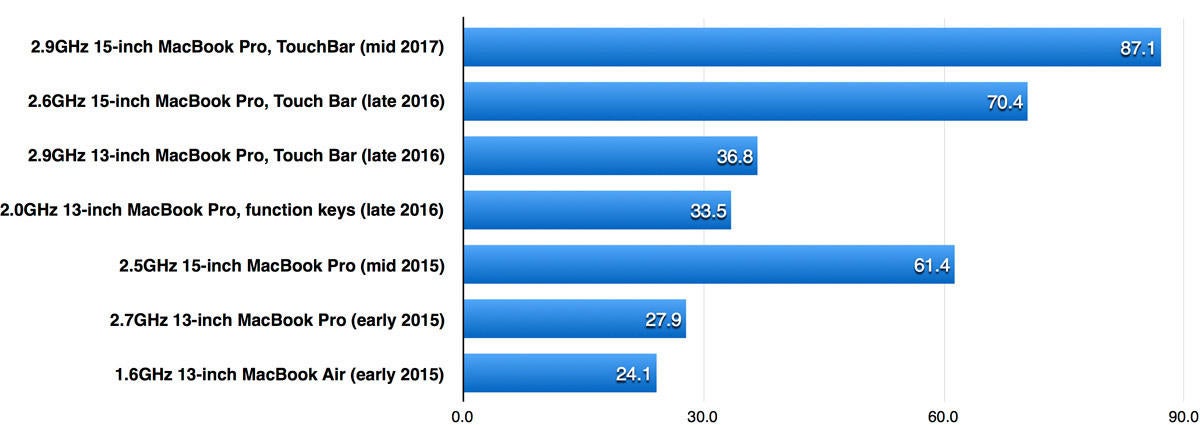 IDG
IDGScores are frames per second. Longer bars are better. Click to enlarge.
The graphics performance difference is more apparent in the Cinebench OpenGL test. The 2.9GHz MacBook Pro scored 87.1 frames per second, a 14 percent boost over the 2.6GHz 15-inch MacBook Pro from last year.
In our review of the MacBook Pro last year, we said that the MacBook Pro, even with 16GB of memory, is probably fast enough for most video editors. But even if you’re still not convinced, there’s another factor you should consider: macOS High Sierra.
Kaby Lake and macOS High Sierra
Kaby Lake features technology that can enhance video performance—specifically, 4K video. Intel integrated into the processor support for encoding and decoding 10-bit 4K HEVC and 4K VP9 video. Not only will this help performance for 4K video, it can help save on battery life. (For more information on this, I highly recommend reading, “10 key things to know about Intel’s Kaby Lake CPUs” and “Intel Kaby Lake Review” from our sister publication, PCWorld.)
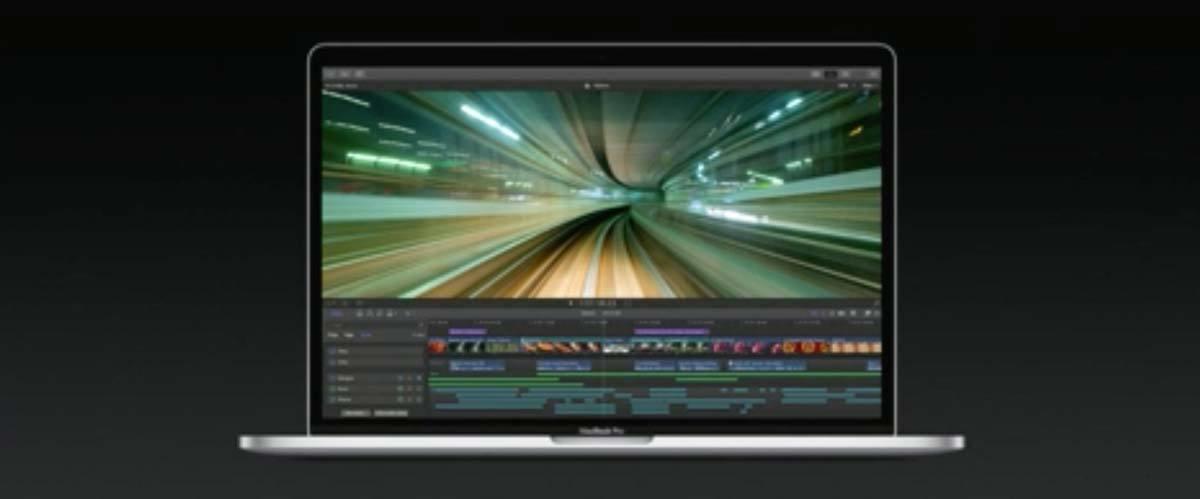 Apple
AppleDuring the WWDC 2017 keynote, Apple announced that macOS High Sierra and its suite of Pro Tools apps will have HEVC support.
The proper software drivers are required to take advantage of this technology, and it looks like they will be in the next version of the Mac operating system, macOS High Sierra. One of the key features in High Sierra that is being touted by Apple is support for the 4K HEVC codec. During the Apple Worldwide Developers Conference keynote, Apple said that hardware acceleration for HEVC video will be available in “the newest Macs.”
This is definitely something to keep an eye on. We’ll be following the development of macOS High Sierra closely, and we’ll be ready with the video benchmarks once the HEVC support is ready to be put to the test.
Bottom line
So, you’re in the market for a top-of-the-line laptop. Should you buy the $2,799, 2.9GHz 15-inch MacBook Pro? If you’re a general user who uses the internet constantly, uses Apple apps like Photos, iMovie, iTunes, Pages, and the like, you’ll find that the 2.9GHz MacBook Pro is certainly a luxurious laptop to have. You can probably save a few dollars and get the other 15-inch MacBook Pro configuration for $2,399. But if you insist on the best, you’ll be very happy.
If you’re a pro user, you can’t be blamed for being disappointed in the 16GB memory limitation. But the impeding 10-bit 4K HVEC support in macOS High Sierra and the potential for hardware acceleration using Kaby Lake’s built-in HVEC support makes for a very enticing combination. The 2.9GHz 15-inch MacBook Pro becomes a very attractive investment, even if you recently bought a previous-generation MacBook Pro.


